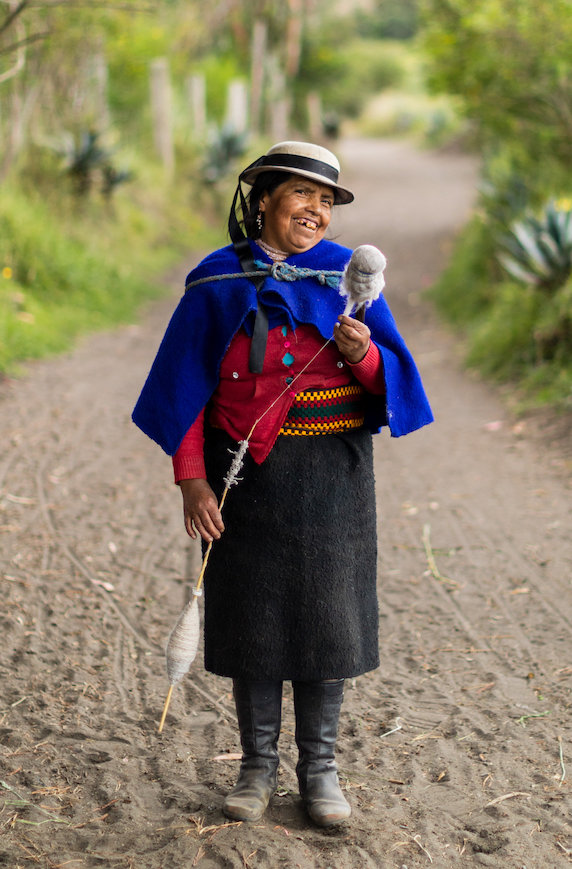
From jaunty bowler hats to gorgeous shawls and iconic ponchos, the fashion of the Quechua communities in the Andes Mountains is striking and rich with history.
The clothes of these indigenous South Americans is a mix of their pre-Incan roots, colonial Spanish influences and a dash of 20th-century flair. The beautiful textiles they wear are integral to daily life, showcasing their craftsmanship from head to toe with bright colors and patterns that are distinctive to the regions they’re from – primarily in the highland areas of Peru, Ecuador and Bolivia.
María Micaela Castro Sisa is an alpaca farmer who lives in Ecuador’s windswept Andean páramo, a treeless plateau between the tree line and the snowy peaks. Each piece of her colorful outfit represents her community’s heritage.
This is the color of the sky, this is the color of our blood and this white is the color of our snowcapped Chimborazo. Here we have this belt has the sun, blood, nature, and black is the Earth – this skirt is for our earth. María Micaela Castro Sisa, Alpaca Farmer
Many of these traditional pieces are still crafted and worn with pride today.
Perhaps the most recognizable garment, the poncho, has been worn since long before Spanish colonialism. Since they’re essentially woven blankets designed to be worn, they’re perfect for keeping out the cold and damp of highland living. Some ponchos are made with signature colors or patterns that represent specific regions.
Quechua shawls truly show off their exquisite fiber craftmanship. Whether they’re knitted, crocheted or woven, these practical wraps are another way to stay warm in style.
A faja is a wide, colorful woven belt worn by both men and women. Also called chumpi, they look like festive cumberbunds used to hold up skirts, support the lower back while carrying heavy loads, secure swaddled babies and carry tools for spinning yarn.
Fetching bowler hats are very popular in Ecuadorian Quechua communities. They’ve become part of the signature look since British railway workers brought them to the region in the ‘20s.
Women wear these big pleated skirts with embroidered trims year-round, often layering two or more depending on the weather. They’re typically black, aside from the colorful, patterned trim, which is unique to certain communities.
Generally, Quechua men wear Western-style clothing under ponchos, but some still wear beige or white bayeta pants – knee-length breeches that are hand-woven.





